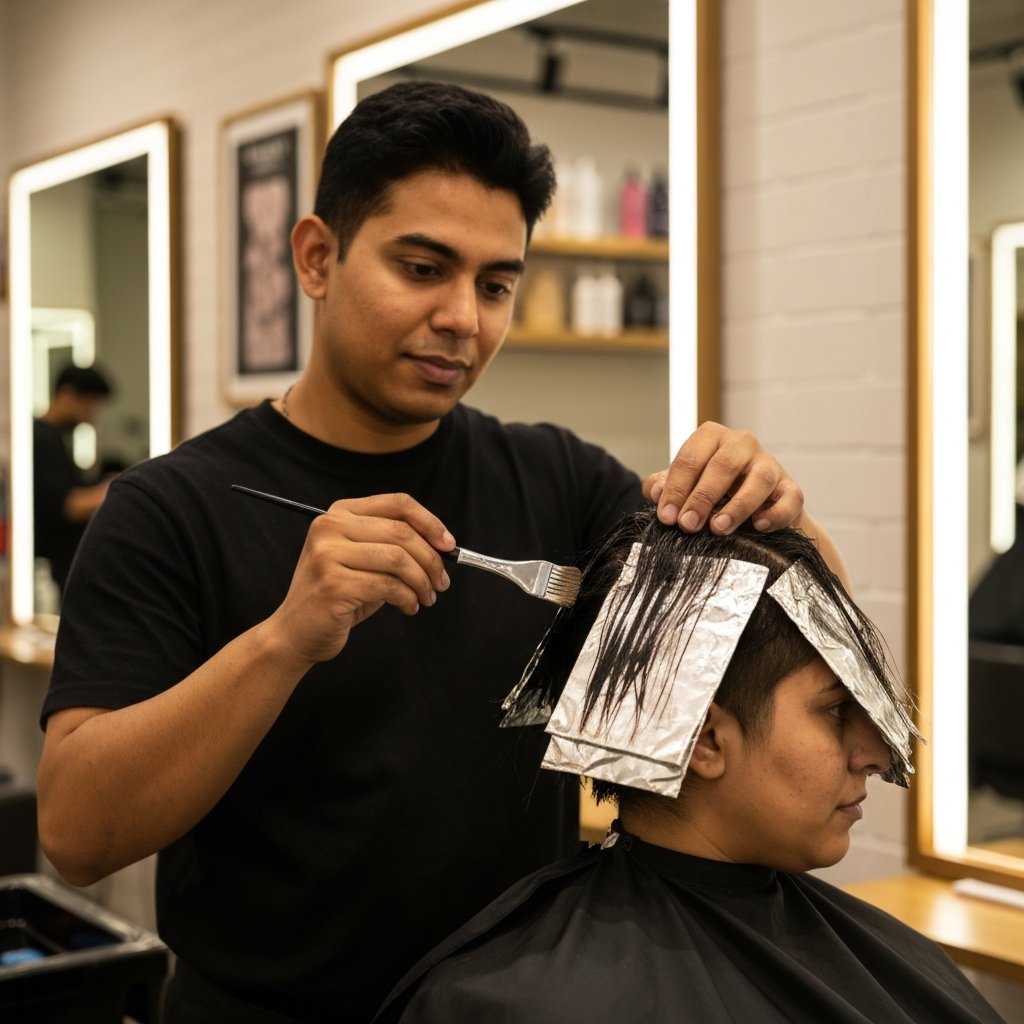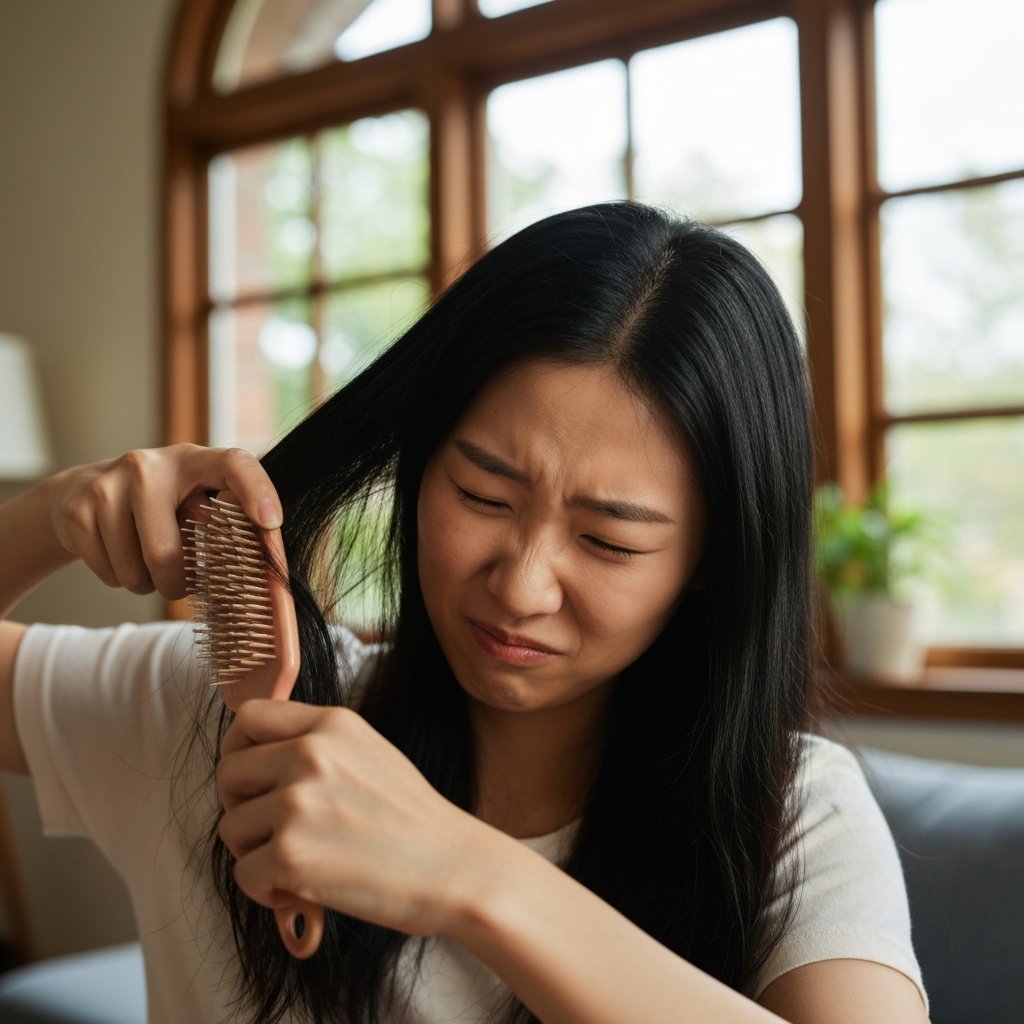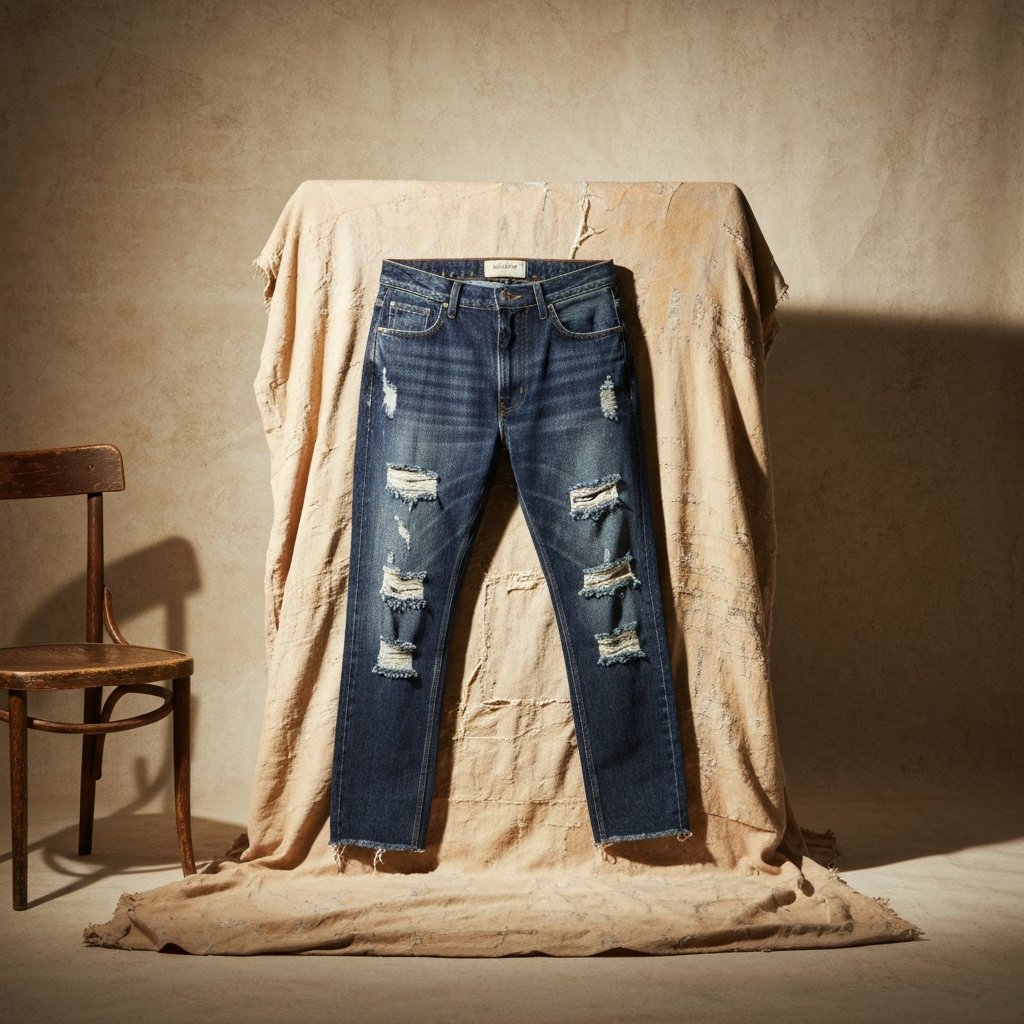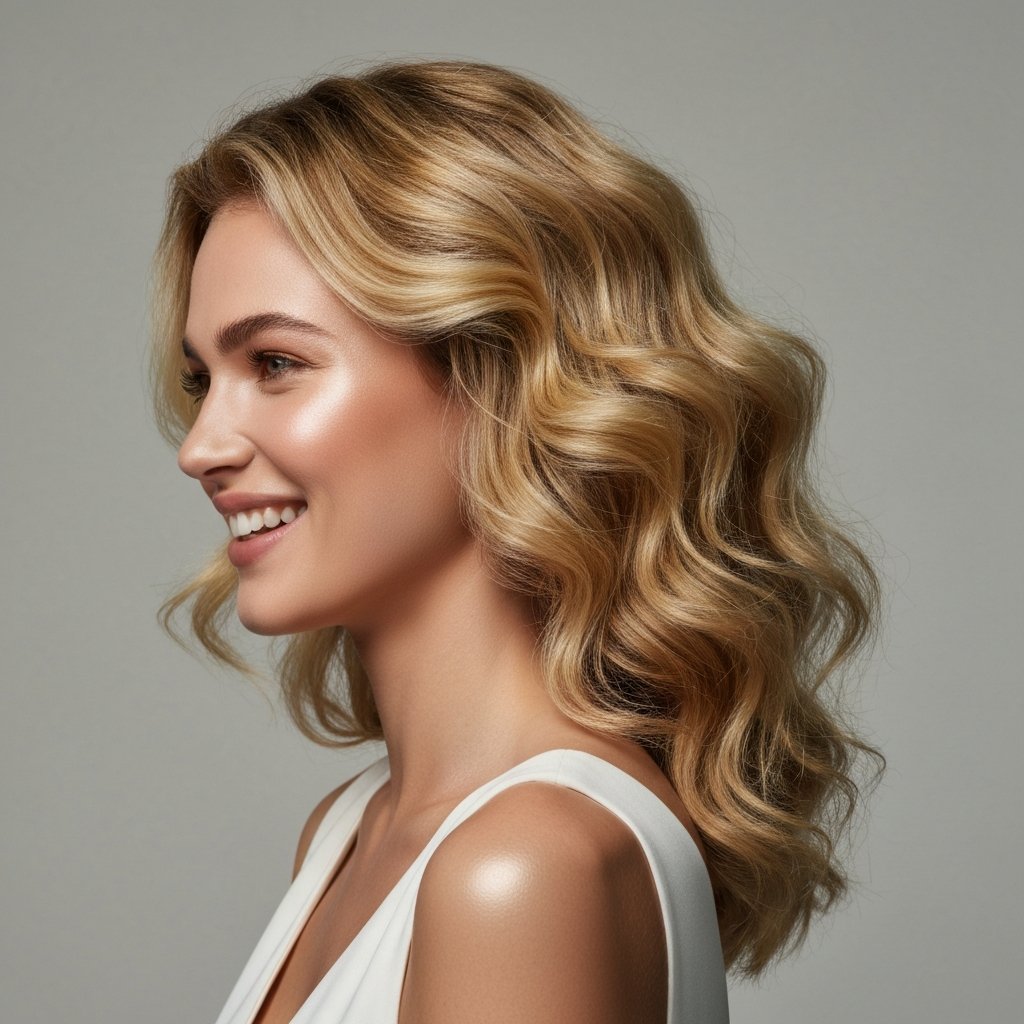
How to Grow Out Bangs Gracefully: Styling Tips for Every Stage | The Ultimate Hair Guide
11 min read

11 min read

10 min read

9 min read

10 min read

14 min read

13 min read
Do you feel like your hair has lost its luster? Does it feel more like straw than silk when you run your fingers through it? If you are asking yourself, "Why is my hair so dry?" you are certainly not alone. Dry hair is one of the most common complaints heard by professional stylists worldwide. It is frustrating, difficult to style, and often prone to breakage. However, dryness is rarely just a matter of bad luck; it is usually a symptom of underlying issues in your routine, environment, or health.
Understanding the root cause of dehydration is the first step toward restoring your hair's vitality. Hair becomes dry when the shaft does not absorb or retain enough moisture, leading to a dull appearance and fragile texture. While some people are naturally prone to dryness due to their hair type—curly and textured hair, for example, tends to be drier because natural oils have a harder time traveling down the hair shaft—external factors play a massive role.
In this comprehensive guide, we will explore the 12 hidden causes of dry hair that might be sabotaging your strands. More importantly, we will provide actionable, professional advice on how to fix them, helping you transform brittle breakage into bouncy, hydrated locks.
One of the most overlooked causes of dry hair is the environment itself. Just as your skin can become parched and damaged from exposure to the elements, your hair is equally susceptible. During the summer months, prolonged exposure to UV rays can degrade the protein structure of the hair (keratin), leading to significant moisture loss and color fading. The sun acts almost like a slow-moving bleach, lifting the cuticle and allowing moisture to escape.

Conversely, winter brings its own set of challenges. Cold, dry air outside combined with blasting artificial heat inside creates a zero-humidity environment that sucks moisture directly out of the hair shaft. This lack of atmospheric moisture leaves hair static-prone, flyaway, and incredibly brittle. If you notice your hair texture changes drastically with the seasons, environmental factors are likely a primary culprit.
To combat this, think of hair care like skincare. In the summer, utilizing products with UV filters or wearing hats can provide a physical barrier. in the winter, utilizing humidifiers in your home and sealing your hair with heavier oils can prevent the dry air from stealing your hydration.
The water coming out of your shower head might be the invisible enemy of your good hair days. Hard water contains high levels of dissolved minerals, specifically calcium and magnesium. When you wash your hair with hard water, these minerals react with your shampoo to form a film that clings to the hair shaft. This is often referred to as "soap scum," and it is not limited to your shower tiles; it is on your hair, too.

This mineral buildup creates a barrier that prevents moisture from entering the hair. No matter how expensive your conditioner is, if there is a layer of calcium blocking it, it cannot penetrate the cuticle. Over time, this leaves hair feeling rough, tangled, and perpetually dry. If your hair feels like it has a coating on it even after washing, or if it lacks shine despite using oils, you may be dealing with hard water issues.
The fix for this is two-fold. First, installing a showerhead filter can significantly reduce mineral exposure. Second, incorporating a chelating or clarifying shampoo into your routine once or twice a month can help strip away these mineral deposits, allowing your moisturizing products to work effectively again.
Cleanliness is a virtue, but when it comes to hair, there is such a thing as being too clean. Your scalp produces a natural oil called sebum, which is designed to travel down the hair shaft and keep it moisturized and protected. When you wash your hair every single day, you are constantly stripping away these natural oils before they have a chance to do their job.

This cycle of stripping triggers the scalp to produce even more oil to compensate, leading to greasy roots and dry ends—a confusing combination that often leads people to wash even more. For those with thick, curly, or coarse hair, daily washing is particularly damaging because sebum takes much longer to travel down the spirals of the hair shaft.
Most professional stylists recommend extending the time between washes. Aim for washing every two to three days, or even less if your hair type allows. On non-wash days, you can rinse with water and condition the ends, or use a dry shampoo to manage oil at the roots while preserving the moisture at the ends.
Not all shampoos are created equal. Many commercial shampoos contain harsh sulfates, such as sodium lauryl sulfate (SLS) and sodium laureth sulfate (SLES). These are powerful detergents that create a rich, foamy lather that many consumers associate with cleanliness. However, they are often too effective, stripping the hair of all its natural lipids and leaving the cuticle raised and rough.

Additionally, products containing short-chain alcohols (like isopropyl alcohol or propanol) can be incredibly drying. These ingredients are often used to make products dry quickly on the hair, but the cost is long-term dehydration. If your shampoo leaves your hair feeling "squeaky" clean, that squeak is actually the sound of friction caused by a lack of natural lubrication.
Switching to sulfate-free, moisturizing formulas can make a world of difference. Look for ingredients like glycerin, aloe vera, argan oil, and amino acids. These ingredients cleanse the scalp without decimating the moisture balance of the hair fiber.
There are few things more relaxing than a steaming hot shower, especially after a long day. Unfortunately, your hair hates it. Hot water blasts the hair cuticle open. While this can be good for allowing shampoo to penetrate, prolonged exposure to high heat washes away lipids and natural moisturizing factors that keep hair supple.

When the cuticle is left open and raised from hot water, the hair becomes porous and unable to hold onto water. It also loses its shine, as smooth cuticles reflect light while rough cuticles absorb it. This results in a dull, matte finish that looks dry and lifeless.
The solution doesn't have to be an ice bath. Wash your hair with lukewarm water to cleanse effectively. Then, if you can brave it, finish with a cool or cold rinse. Cold water helps to snap the cuticle shut, sealing in the conditioner and moisture you just applied, resulting in smoother, shinier hair.
Thermal damage is perhaps the most well-known cause of dry hair, yet it remains one of the most common. Blow dryers, flat irons, and curling wands can reach temperatures upwards of 400°F (200°C). When you apply this heat to damp or dry hair, it can boil the water molecules inside the hair shaft, causing them to expand and fracture the hair structure from the inside out—a phenomenon known as "bubble hair."

Daily heat styling without protection essentially cooks the hair, destroying the keratin proteins that give hair its strength and elasticity. Once these proteins are denatured, the hair loses its ability to retain moisture, becoming permanently dry until the damaged portion is cut off.
To mitigate this, always use a high-quality heat protectant spray or serum before styling. These products create a thermal barrier that distributes heat more evenly. Furthermore, try to turn down the temperature on your tools. Most hair types do not need the maximum heat setting to achieve the desired style. Incorporating heat-free styling methods a few times a week can also give your hair a much-needed recovery period.
Hair color, bleach, relaxers, and perms all work by chemically altering the structure of the hair. To deposit color or change texture, these chemicals must force open the protective cuticle layer and break down the internal bonds of the hair. While modern formulas are conditioning, the process itself is inherently damaging.

Bleach is particularly harsh as it oxidizes the melanin in the hair, leaving the hair shaft filled with microscopic holes. This makes the hair extremely porous. High porosity hair absorbs water quickly but loses it just as fast because there is no structural integrity to hold it in. This leads to hair that feels mushy when wet and like straw when dry.
If you chemically treat your hair, you must commit to a rigorous aftercare routine. This includes protein treatments to rebuild strength and deep moisture masks to restore hydration. It is also crucial to trust professional colorists who know how to preserve the integrity of your hair during these processes rather than attempting complex chemical services at home.
How you handle your hair when it is wet matters. Hair is at its most fragile state when it is wet because water breaks the hydrogen bonds that give hair its shape. Aggressively rubbing your hair with a standard cotton terry cloth towel creates immense friction, roughening the cuticle and causing frizz and dryness.

Similarly, ripping a brush through tangled, dry hair causes mechanical breakage and splits the ends. Once the ends are split, the damage can travel up the hair shaft, compromising the moisture retention of the entire strand.
Switch to a microfiber towel or an old cotton t-shirt to gently squeeze excess water out of your hair rather than rubbing it. When detangling, start from the ends and slowly work your way up to the roots, preferably while the hair is coated in conditioner or a detangling spray. Using a wide-tooth comb or a brush specifically designed for wet hair can prevent unnecessary mechanical damage.
You spend roughly eight hours a night with your head on a pillow. If you are sleeping on a standard cotton pillowcase, the fabric acts like a sponge, absorbing moisture from your hair (and skin) throughout the night. Cotton fibers are also relatively rough under a microscope; as you toss and turn, your hair catches on these fibers, leading to friction, tangles, and moisture loss.

This is one of the easiest causes to fix. Switching to a silk or satin pillowcase provides a slip surface that allows hair to glide over the fabric without friction. Silk and satin are also less absorbent than cotton, meaning your natural oils and nighttime hair treatments stay on your hair where they belong, rather than transferring to your bedding.
It is a common myth that trimming hair makes it grow faster, but trimming is essential for length retention and moisture balance. The ends of your hair are the oldest and most weathered part of the strand. Over time, the protective cuticle wears away, exposing the inner cortex. This leads to split ends.

If split ends are not removed, they can split further up the shaft like a run in a stocking. This damage compromises the hair's ability to hold moisture. Holding on to damaged ends often results in hair that looks dry, frizzy, and thin at the bottom. Regular trims—every 8 to 12 weeks—remove this damage, keeping the ends sealed and the overall appearance of the hair healthy and hydrated.
Hair is a non-essential tissue to the human body. When your body is short on nutrients or dehydrated, it prioritizes vital organs like the heart and liver, sending resources there first. Your hair is the last to receive nutrients and the first to suffer when there is a deficiency.
A diet lacking in essential fatty acids, protein, vitamins (specifically A, C, E, and Biotin), and minerals (iron and zinc) will result in hair that grows out weaker and drier. Furthermore, simple dehydration—not drinking enough water—manifests in dry skin and dry hair.
Ensuring you are eating a balanced diet rich in Omega-3 fatty acids (found in salmon, walnuts, and flaxseeds) and drinking plenty of water is the internal foundation for external beauty. Supplements can help, but they should not replace a nutrient-dense diet.
As we age, our bodies change, and so does our hair. Hormonal shifts, such as those experienced during pregnancy, postpartum, menopause, or due to thyroid imbalances, can drastically affect oil production. As estrogen levels drop during menopause, for example, collagen production decreases and the scalp produces significantly less oil.
This natural aging process leads to hair that is finer, thinner, and significantly drier than it was in younger years. Gray hair also has a different texture; it tends to be coarser and more wiry, making it difficult for natural oils to coat the strand.
While we cannot stop the clock or control hormones entirely, adjusting your hair care routine to match your life stage is vital. This might mean switching to richer, anti-aging hair care lines that focus on intense lipid replenishment and scalp health.
If you have identified the causes above, here is an immediate action plan to rehydrate your hair:
Dry hair is a signal from your body and your beauty routine that something needs to change. Whether it is turning down the heat on your styling tools, installing a water filter, or simply switching to a silk pillowcase, small adjustments can yield massive results. By identifying which of these 12 hidden causes is affecting you, you can curate a routine that restores the soft, shiny, and manageable hair you deserve. If you are struggling to get your dryness under control despite your best efforts, consult with a professional stylist who can assess your hair's porosity and recommend salon-grade treatments to jumpstart your hydration journey.

11 min read

10 min read

9 min read